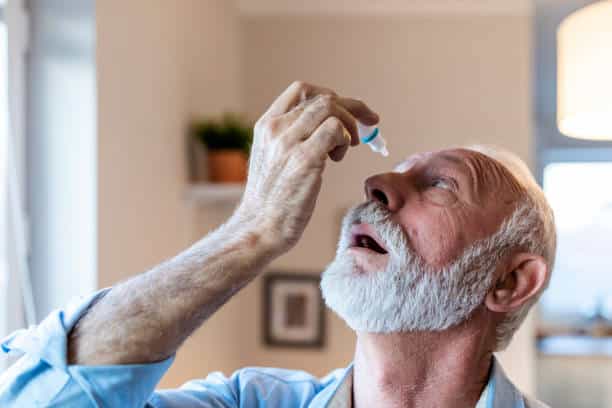Dry Eyes
Step-by-Step Guide: How to Apply Eye Ointment Correctly
The significance of maintaining optimal eye health cannot be overstated, as our eyes play a pivotal role in our daily lives and overall well-being. From enjoying the beauty of the world around us to performing essential tasks, our vision is a vital sense that greatly influences our quality of life. Therefore, it becomes imperative to understand the importance of proactive measures and understanding the concept of how to apply eye ointment correctly.
The importance of applying eye ointment correctly
Applying eye ointment correctly is a critical aspect of eye care that often goes overlooked, yet it holds immense importance for several reasons. Eye ointments are formulated to treat or manage a variety of ocular conditions, including dry eyes, infections, and inflammation, and to facilitate healing after eye surgeries.
These ointments contain medications or lubricants specifically designed to provide relief, protect the eye surface, and sometimes deliver antibiotics directly to the area requiring treatment. The effectiveness of these treatments, however, is significantly influenced by the method of how to apply ointment in eye. Proper application ensures that the full therapeutic benefits of the ointment are realized, enhancing comfort, promoting healing, and preventing further irritation or infection.
- Maximizing Therapeutic Effects: Correct application of eye ointment ensures that an adequate amount of medication is delivered to the eye. This maximizes the therapeutic effect, whether it’s to lubricate the eye, reduce inflammation, or fight an infection. Incorrect application can lead to insufficient dosing, which may prolong the condition or exacerbate symptoms.
- Reducing Risks of Contamination: The eye is a sensitive organ prone to infections. Applying eye ointment in a clean, safe manner minimizes the risk of introducing contaminants that could lead to infections. It’s crucial to apply the ointment without touching the tip of the ointment tube to the eye or any other surface to prevent bacterial contamination.
- Ensuring Comfort and Compliance: If eye ointment is not applied correctly, it can lead to discomfort, blurred vision, or the sensation of a foreign body in the eye. These adverse effects may discourage individuals from continuing with their treatment as prescribed. Learning the proper technique for ointment application can help mitigate these issues, ensuring greater comfort during treatment and improving compliance with prescribed regimens.
- Preventing Injury: The improper application of eye ointment can result in accidental injury to the delicate tissues of the eye. Gentle and correct application techniques are crucial to avoid scratching or causing undue pressure on the eyeball, which could lead to more serious complications.
- Optimizing Healing: For conditions requiring healing of the eye’s surface, such as after surgery or an injury, applying eye ointment correctly can create an optimal environment for healing. The ointment can act as a protective barrier, keeping the eye lubricated and safe from irritants that could interfere with the healing process.
The importance of correctly applying eye ointment cannot be overstated. It ensures the efficacy of the treatment, reduces the risk of complications, and promotes a smoother, more comfortable healing process. Given the critical role that our vision plays in our daily lives, understanding the process of how to use eye ointment correctly is a small but significant step toward maintaining optimal eye health.
How to apply eye ointment?
Applying eye ointment correctly is essential for treating various eye conditions effectively while ensuring safety and comfort. This comprehensive guide will walk you through the process step-by-step, ensuring that you maximize the therapeutic benefits of your eye ointment.
Understanding Eye Ointments
Eye ointments are semi-solid greases designed to provide prolonged contact with the eye surface compared to eye drops. They contain medications aimed at treating or preventing eye infections, and inflammation, and providing lubrication for dry eye conditions. The thickness of ointments means they can cause temporary blurred vision, making bedtime application ideal for some formulas.
Preparing for Application for How to apply ointment in eye!
- Wash Your Hands: Begin by thoroughly washing your hands with soap and water to remove any dirt, bacteria, or viruses. Dry your hands with a clean towel or paper towel to minimize the risk of eye contamination.
- Check the Ointment: Ensure the ointment is not expired and the seal is intact before first use. Inspect the tip for any debris or damage to avoid eye injury.
- Prepare a Clean Space: Choose a well-lit, clean area where you can comfortably apply the ointment without distractions.
Applying the Ointment
- Position Yourself Comfortably: Sit or stand in front of a mirror. If applying the ointment to someone else, have them lie down or tilt their head back.
- Open the Ointment Tube: Remove the cap without touching the tip of the tube. If it’s your first time using the tube, some products may require you to break a seal.
- Pull Down the Lower Eyelid: Gently pull down the lower eyelid to create a small pocket. For hygiene and safety, avoid touching the eye or eyelashes with the tube or your fingers.
- Apply the Ointment: Hold the tube close to the eye without touching it. Squeeze a small strip of ointment (about 1/4 inch) into the pocket created by the lower eyelid. Do not let the tube touch the eye, eyelashes, or any other surface, as this can contaminate the ointment.
- Close Your Eye: Gently close your eye for a few moments to spread the ointment evenly over the eye surface. Do not rub your eye, as this can irritate it.
- Wipe Away Excess: If there’s excess ointment around your eye, gently wipe it away with a clean, damp cloth or tissue. Avoid touching the tip of the ointment tube with the cloth or tissue.
- Cap the Tube: Immediately replace the cap on the tube to prevent contamination.
Following the above steps is the ideal approach towards how to apply eye ointment properly.
Aftercare and Tips
- Blurred Vision: It’s normal to experience temporary blurred vision after applying eye ointment. Blink gently to help spread the ointment evenly.
- Wait Before Using Other Eye Medications: If you use multiple eye medications, wait at least 5 minutes before applying another product. Eye drops should precede ointments if both are used.
- Avoid Contaminants: Keep the tube’s tip clean and avoid placing it on any surface. Do not share your eye ointment with others.
- Storage: Follow the storage instructions on the packaging. Most ointments are stored at room temperature, away from light and moisture.
- Follow-up: Adhere to your healthcare provider’s instructions regarding the duration of use. Do not use the ointment longer than recommended.
- Seek Advice if Necessary: If you experience increased discomfort, vision changes, or signs of infection (redness, swelling, discharge), contact your healthcare provider.
These quick tips ensure that the process of how to apply ointment in eye does not cause any side effects.
Conclusion
This blog guide aims to answer the query of how to use eye ointment. Applying eye ointment may seem daunting at first, but with practice, it becomes an easy and safe routine. Proper application is crucial for the treatment’s effectiveness and for maintaining eye health. By following these detailed steps, you can ensure that you are applying eye ointment correctly, maximizing its benefits while minimizing potential risks. Remember, if you have any concerns or questions about your eye condition or how to apply ointment correctly in the eye, consult with an eye care professional for personalized advice.



